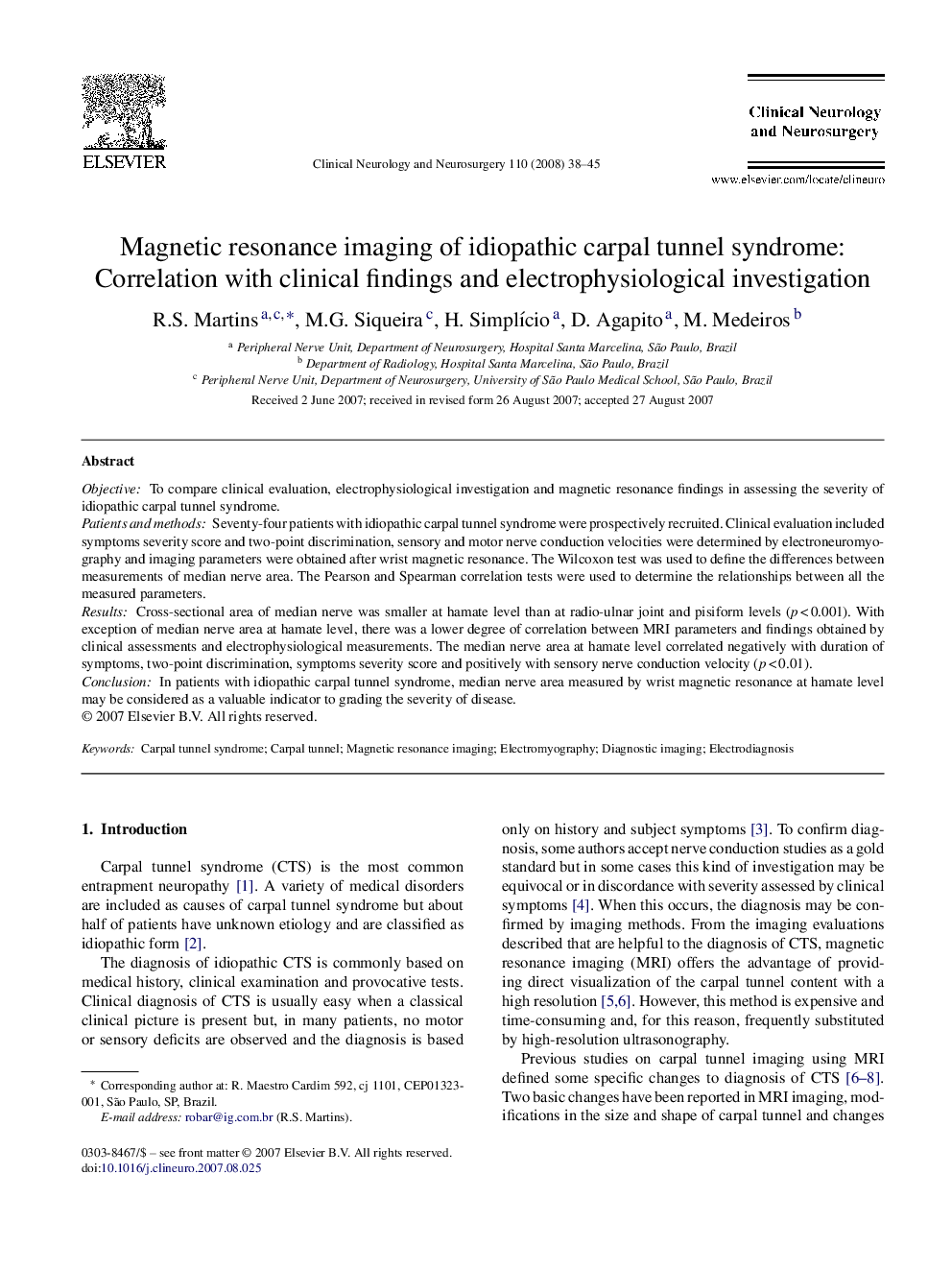| Article ID | Journal | Published Year | Pages | File Type |
|---|---|---|---|---|
| 3042275 | Clinical Neurology and Neurosurgery | 2008 | 8 Pages |
ObjectiveTo compare clinical evaluation, electrophysiological investigation and magnetic resonance findings in assessing the severity of idiopathic carpal tunnel syndrome.Patients and methodsSeventy-four patients with idiopathic carpal tunnel syndrome were prospectively recruited. Clinical evaluation included symptoms severity score and two-point discrimination, sensory and motor nerve conduction velocities were determined by electroneuromyography and imaging parameters were obtained after wrist magnetic resonance. The Wilcoxon test was used to define the differences between measurements of median nerve area. The Pearson and Spearman correlation tests were used to determine the relationships between all the measured parameters.ResultsCross-sectional area of median nerve was smaller at hamate level than at radio-ulnar joint and pisiform levels (p < 0.001). With exception of median nerve area at hamate level, there was a lower degree of correlation between MRI parameters and findings obtained by clinical assessments and electrophysiological measurements. The median nerve area at hamate level correlated negatively with duration of symptoms, two-point discrimination, symptoms severity score and positively with sensory nerve conduction velocity (p < 0.01).ConclusionIn patients with idiopathic carpal tunnel syndrome, median nerve area measured by wrist magnetic resonance at hamate level may be considered as a valuable indicator to grading the severity of disease.
